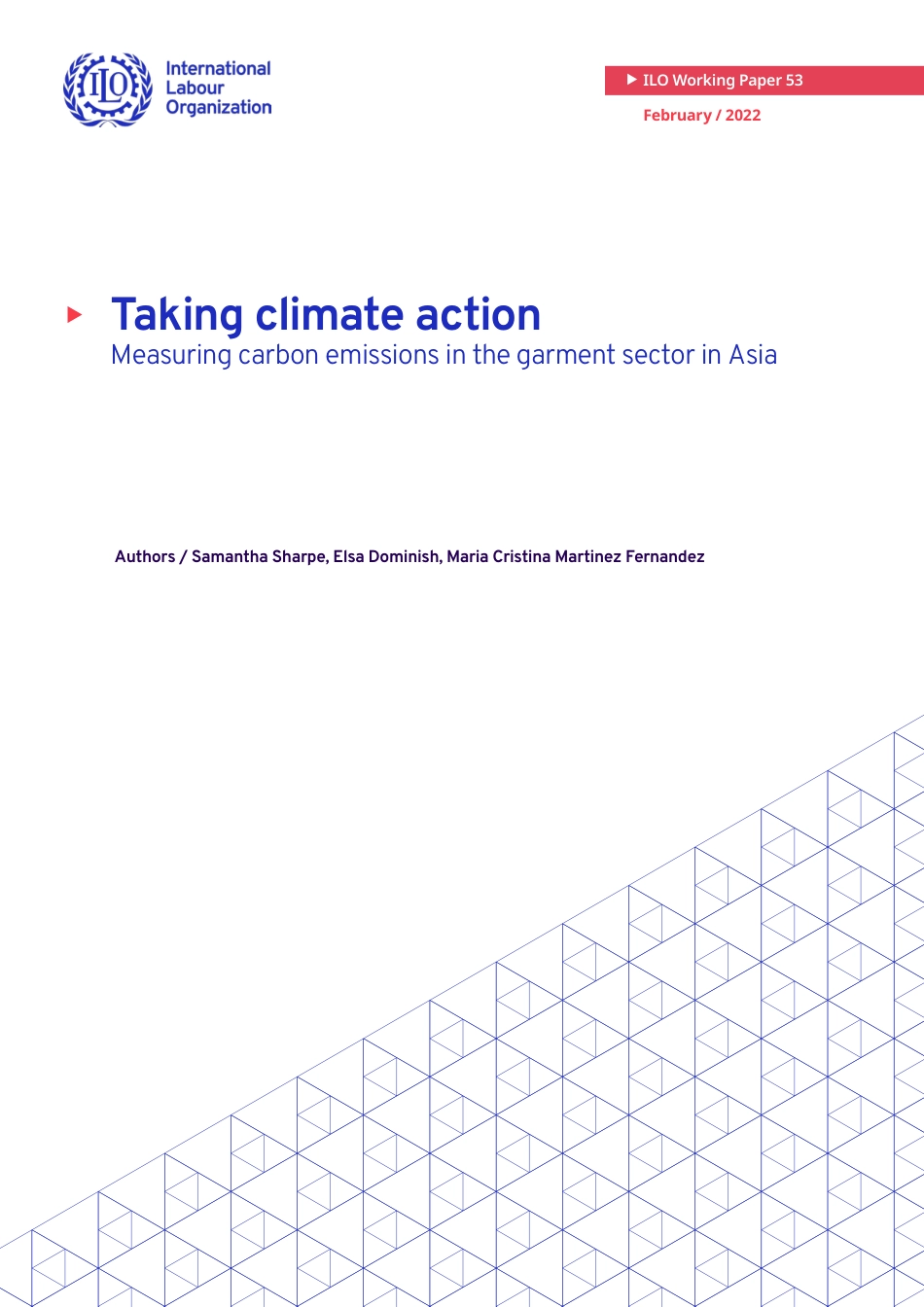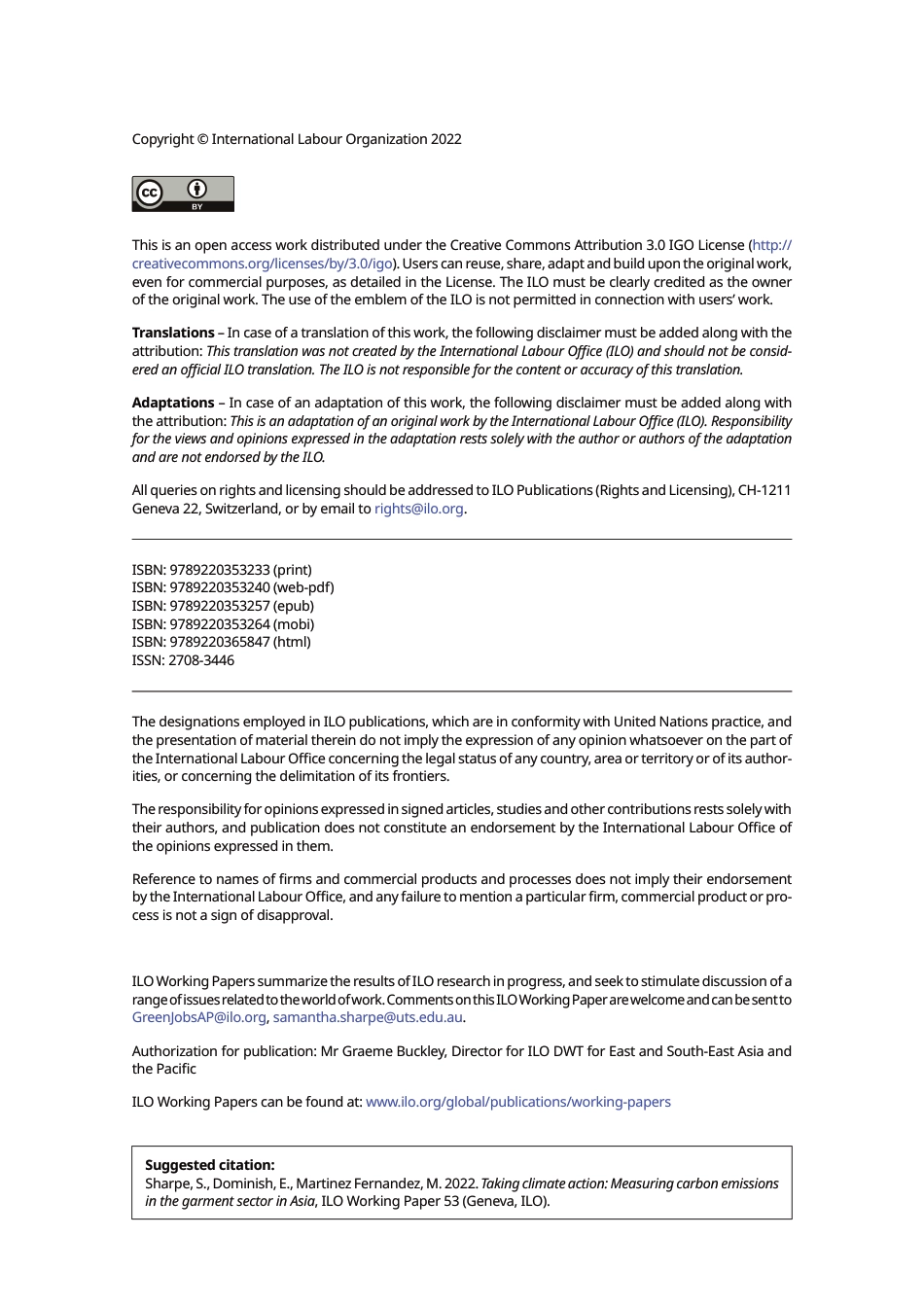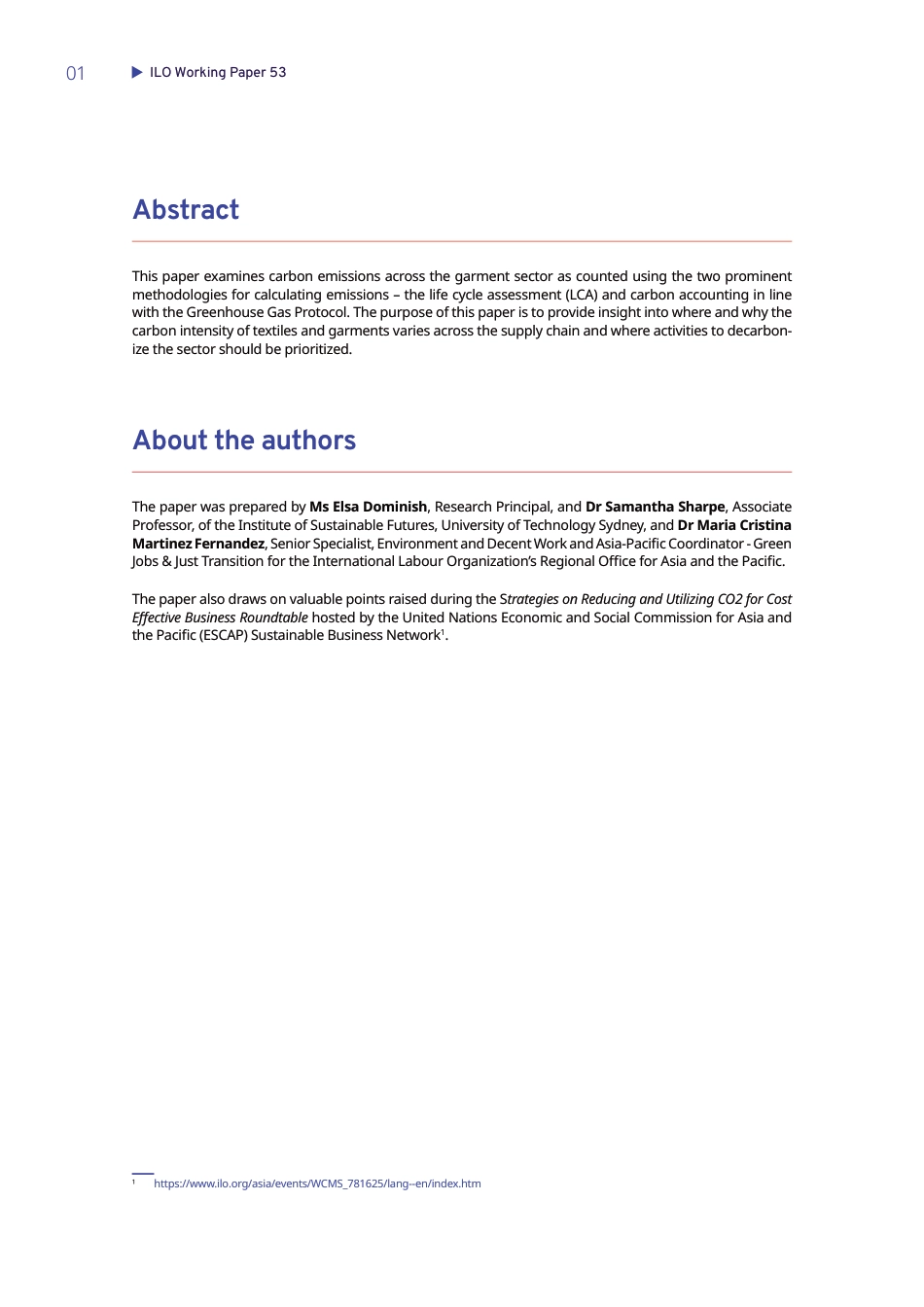X Taking climate actionMeasuring carbon emissions in the garment sector in AsiaAuthors / Samantha Sharpe, Elsa Dominish, Maria Cristina Martinez Fernandez February / 2022ILO Working Paper 53Copyright © International Labour Organization 2022This is an open access work distributed under the Creative Commons Attribution 3.0 IGO License (http://creativecommons.org/licenses/by/3.0/igo). Users can reuse, share, adapt and build upon the original work, even for commercial purposes, as detailed in the License. The ILO must be clearly credited as the owner of the original work. The use of the emblem of the ILO is not permitted in connection with users’ work.Translations – In case of a translation of this work, the following disclaimer must be added along with the attribution: This translation was not created by the International Labour Office (ILO) and should not be consid-ered an official ILO translation. The ILO is not responsible for the content or accuracy of this translation.Adaptations – In case of an adaptation of this work, the following disclaimer must be added along with the attribution: This is an adaptation of an original work by the International Labour Office (ILO). Responsibility for the views and opinions expressed in the adaptation rests solely with the author or authors of the adaptation and are not endorsed by the ILO.All queries on rights and licensing should be addressed to ILO Publications (Rights and Licensing), CH-1211 Geneva 22, Switzerland, or by email to rights@ilo.org. ISBN: 9789220353233 (print)ISBN: 9789220353240 (web-pdf)ISBN: 9789220353257 (epub)ISBN: 9789220353264 (mobi)ISBN: 9789220365847 (html)ISSN: 2708-3446 The designations employed in ILO publications, which are in conformity with U...



